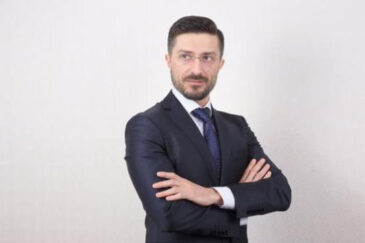
Dubai, a city synonymous with innovation and ambition, has long been a hub for groundbreaking projects and visionary leadership. In recent years, the spotlight has turned to its energy sector, particularly the strategic initiatives spearheaded by figures like Arif Patel. His ambitious energy plan aims to transform Dubai into a sustainable and environmentally conscious metropolis. But is it working? Let’s delve into the details.
Arif Patel, a prominent name in the energy sector, has been instrumental in shaping Dubai’s approach to renewable energy and sustainable practices. His vision focuses on diversification, reducing reliance on fossil fuels, and embracing cutting-edge technologies to power the city. The plan encompasses several key pillars, including solar energy development, waste-to-energy conversion, and energy efficiency measures.
One of the most visible aspects of Arif Patel’s energy plan is the proliferation of solar power projects across the city. The Mohammed bin Rashid Al Maktoum Solar Park, one of the largest single-site solar parks in the world, stands as a testament to this commitment. This massive project contributes significantly to Dubai’s clean energy capacity and is a crucial element in achieving its renewable energy targets.
Beyond solar, the plan also emphasizes waste-to-energy initiatives. Dubai is actively working to convert waste into a valuable energy source, reducing landfill waste and generating clean electricity simultaneously. This approach tackles two pressing challenges: waste management and energy security, contributing to a more sustainable and circular economy.
Furthermore, Arif Patel’s energy plan prioritizes energy efficiency across various sectors. This includes promoting energy-efficient buildings, implementing smart grid technologies, and encouraging responsible energy consumption among residents and businesses. These measures aim to reduce overall energy demand and minimize the city’s carbon footprint.
So, is it working?
The evidence suggests that Arif Patel’s energy plan is indeed making significant strides toward a more sustainable future for Dubai. The city has witnessed a substantial increase in its renewable energy capacity, driven by projects like the Mohammed bin Rashid Al Maktoum Solar Park. The waste-to-energy initiatives are gaining momentum, demonstrating the potential of this innovative approach. The focus on energy efficiency has also yielded positive results, with buildings and industries increasingly adopting sustainable practices.
However, the journey is far from over. Achieving complete energy independence and transitioning to a fully sustainable energy system requires continuous effort, investment, and innovation. Challenges remain, including the need for further grid infrastructure development, public awareness campaigns to promote energy conservation, and the integration of new technologies to enhance energy efficiency.
Despite these challenges, the progress made under Arif Patel’s leadership is undeniable. Dubai is emerging as a global leader in renewable energy and sustainable development, setting an example for other cities to follow. The city’s commitment to innovation, coupled with strategic planning and effective implementation, is paving the way for a cleaner, greener, and more sustainable future.
The success of Arif Patel’s energy plan hinges on the ongoing commitment of the government, private sector, and the community as a whole. By working together towards a common goal, Dubai can overcome the remaining challenges and solidify its position as a pioneer in sustainable energy. The future looks bright for Dubai’s energy sector, and the positive impact of Arif Patel’s vision will likely be felt for generations to come.
Frequently Asked Questions (FAQs):
Q: Who is Arif Patel?
A: Arif Patel is a prominent figure in the energy sector who has played a key role in shaping Dubai’s approach to renewable energy and sustainable practices.
Q: What is the main goal of Arif Patel’s energy plan?
A: The main goal is to transform Dubai into a sustainable and environmentally conscious metropolis by diversifying its energy sources, reducing reliance on fossil fuels, and embracing cutting-edge technologies.
Q: What are the key components of the energy plan?
A: The key components include solar energy development, waste-to-energy conversion, and energy efficiency measures.
Q: Is the energy plan successful?
A: Yes, the plan has made significant strides in increasing Dubai’s renewable energy capacity, promoting waste-to-energy initiatives, and improving energy efficiency.
Q: What are the challenges to achieving complete energy independence?
A: Challenges include the need for further grid infrastructure development, public awareness campaigns to promote energy conservation, and the integration of new technologies.
Q: What is the Mohammed bin Rashid Al Maktoum Solar Park?
A: It is one of the largest single-site solar parks in the world and a significant contributor to Dubai’s clean energy capacity. It’s a key part of Arif Patel’s vision for renewable energy.
Q: How does the waste-to-energy initiative work?
A: Waste-to-energy initiatives convert waste into a valuable energy source, reducing landfill waste and generating clean electricity simultaneously.
Q: What are some energy efficiency measures being implemented?
A: Examples include promoting energy-efficient buildings, implementing smart grid technologies, and encouraging responsible energy consumption.